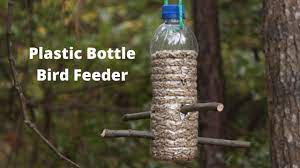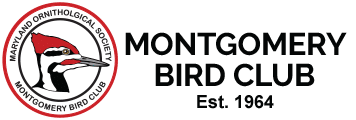How Can I Help Birds?
How Can I Help Birds?
by Gail Mackiernan, MBC Conservation Chair
There are many ways we as individuals can help birds, and we can also – as individuals or as part of an organization – become advocates for birds and their habitats everywhere.
But, as with many things, we need to start at home:
1: Protect birds from window collisions:
Over one billion birds die each year due to striking window glass, and it is estimated that 50% of these deaths occur at low-rise structures like houses and stores, not just at high-rise office buildings once thought the main culprit.
There are many materials now available to retrofit your windows, and new energy-efficient bird-safe glass is available now for new constructions. Even something as simple as tempura paint lines or soap on the outside will make the glass visible, but the are more elegant solutions available now. You can also reduce threats by not placing bird feeders too close to windows.
Resources:
A huge amount of information (and links to bird-safe materials) is available at www.abcbirds.org/abcprograms/policy/collisions/glass.html
2: Keep your cat inside, or outside in an enclosed catio:
This advice probably isn’t needed for bird lovers, who know that free-ranging cats kill more birds than any other direct threat – some 2-3 billion birds a year. It is also better for the cats as indoor cats live much longer and are healthier. Efforts to promote trap-neuter-release (TNR) programs in your neighborhood should be vigorously opposed, and for this you can get help both from MOS and from the American Bird Conservancy.
Resources:
The Internet is filled with DIY designs for (or sources for already-built) catios. For example, https://catioworld.com/ and https://catiospaces.com/catios-cat-enclosures/diy-plans/
For more information on impact of cats on birds, and advice on dealing with cat and TNR issues, see www.abcbirds.org/cats.
3: Improve your backyard habitat:
Considerable research now shows that native plants support good populations of native birds, while gardens full of exotic and non-native vegetation do not. The reason is simple – native plants support native insects and with a few exceptions, all birds, even seedeaters, feed insects to their chicks. Native plants also provide the seeds, berries and nectar to which our birds are adapted. (In fact, berries of some widely planted exotics such as Nandina, are toxic to birds.) Trees and shrubs also provide shelter and nesting sites for birds.
There is a growing move to reduce planting of exotics and increase use of native species. Montgomery County has several programs to help homeowners achieve this, including construction of rainscapes and planting of shade trees and street trees.
Even a small pollinator garden of native plants will attract insects, as well as hummingbirds and (in autumn) birds to feast on seeds. Those interested in the challenge should visit the Gardening with Maryland Native Plants Facebook page.
Resources:
Rain garden and rainscape rebates: www.montgomerycountymd.gov/water/rainscapes/about.html#types
Tree Montgomery will plant free saplings of several native species of tree on your property, many of the species offered are excellent for birds. https://treemontgomery.org
Finally, for those who border a street with sufficient space in the public right-of-way, the Department of Transportation will plant a street tree. Trees offered include many native species good for birds. www.montgomerycountymd.gov/DOT-Highway/Tree/TreePlant.html
Addendum:
An excellent presentation on this topic by Francesca Grifo is available as a video here. A short pdf with some pointers from her talk is available here.
4: Reduce pesticide use, including use of rodenticides.
Some pesticides pose an immediate threat to birds, while others impact insects upon which birds depend. Neonicotinoids like imidacloprid are widely-used, systemic pesticides which are transferred to all parts of the treated plant, including seeds, leaves, nectar and pollen. A study published in 2020 has linked significant declines in (especially) grassland and insectivorous birds directly to use of “neonics,” either from birds consuming treated crop seeds, and indirectly by affecting insect populations. Many plants sold by local retailers are treated with neonics, even some labeled as good for pollinators (!). The American Bird Conservancy has information on which garden care products contain neonics (see this section’s Resources just below).
Wholesale spraying for mosquitoes is also a threat to birds. Despite what their websites promise, the sprays used by “mosquito control” companies promoting “pest-free” yards contact synthetic pyrethoids, which kill all insects that land on the treated leaves. We all are aware of the ongoing decline of insects – “the insect apocalypse” in the words of some scientists – and much of this is due to overuse of pesticides. Always remember: No insects = no birds. Mosquito control is best accomplished by removing breeding areas (standing water, even that in a plant saucer) and use of harmless “mosquito dunks” in water that cannot be drained.
Many insect issues can be solved by using integrated pest management and, frankly, learning to tolerate a few bugs for the birds’ sake.
Finally, a word on rodenticides. The so-called “second generation” rodenticides are a major threat to predators, both birds and mammals. These compounds transfer up the food chain and are responsible for raptor deaths world-wide. Hawks and owls are most seriously impacted, although the death of several mountain lions in California was also linked to rodenticides. A recent study found 82% of eagles had rat poison residue in their bodies. Unfortunately, these compounds are widely used in commercial and consumer rodent control products. Even enclosed “bait boxes” pose a risk, as they do not prevent the weakened rodents from becoming a deadly meal. While rodenticides may be necessary for major infestations, for home use the old fashioned trap works just as well and poisons no one. And hawks and owls remain some of the best rodent control on the planet.
Resources:
Home and Garden: https://abcbirds.org/program/pesticides/home-and-garden/
Integrated Pest Management: https://blackhills-audubon.org/integrated-pest-management-is-good-for-birds/
5: Do-it-yourself upcycled bird feeder:
Here is a useful approach to reusing those plastic soda bottles to feed birds instead of adding to the landfill. See detailed instructions here.

6: Provide Food, Water and Nesting Sites:
Most of us feed birds, and those with sufficient space may also provide water and nest-boxes. While these are generally positive actions, we do have to ensure we are not putting birds at risk in the process. Bird feeders should be sited fairly near vegetation, to provide cover, and at a safe distance from windows to avoid collisions. They should also be cleaned regularly. Avian conjunctivitis and salmonella are spread bird to bird and from feces accumulating under feeders. If a disease outbreak is reported or if you see sick birds at your feeders, take them down, sterilize with chlorine bleach and leave them down for a while for birds to disperse. Sterilize hummingbird feeders regularly and in hot weather, change the nectar frequently.
The same is true for birdbaths or fountains – change water frequently to avoid mosquitoes and to prevent spread of bacterial disease (this means daily in hot weather). Tip: a heated birdbath is a real treat in winter!
Nest-boxes must be carefully sited to avoid predators and other hazards. But since box design and the target species vary so much (from owls to wrens), it is best to get advice from various websites. One of the most comprehensive is Nestwatch, from The Cornell Laboratory of Ornithology. Another is Sialis, targeting Bluebirds but with a host of information on other cavity nesting species.
Resources:
https://www.allaboutbirds.org/news/where-to-put-your-bird-feeder/
http://www.sialis.org
https://nestwatch.org/
https://nestwatch.org/learn/all-about-birdhouses/nest-box-placement/


